What are Internal Codes?
Internal Codes are predefined, non-editable system identifiers assigned to each candidate status within ClayHR’s Applicant Tracking System (ATS).
They are essential for:
- Maintaining consistency across the platform
- Enabling integrations with third-party tools (e.g. Indeed)
- Powering internal automation and hiring workflows
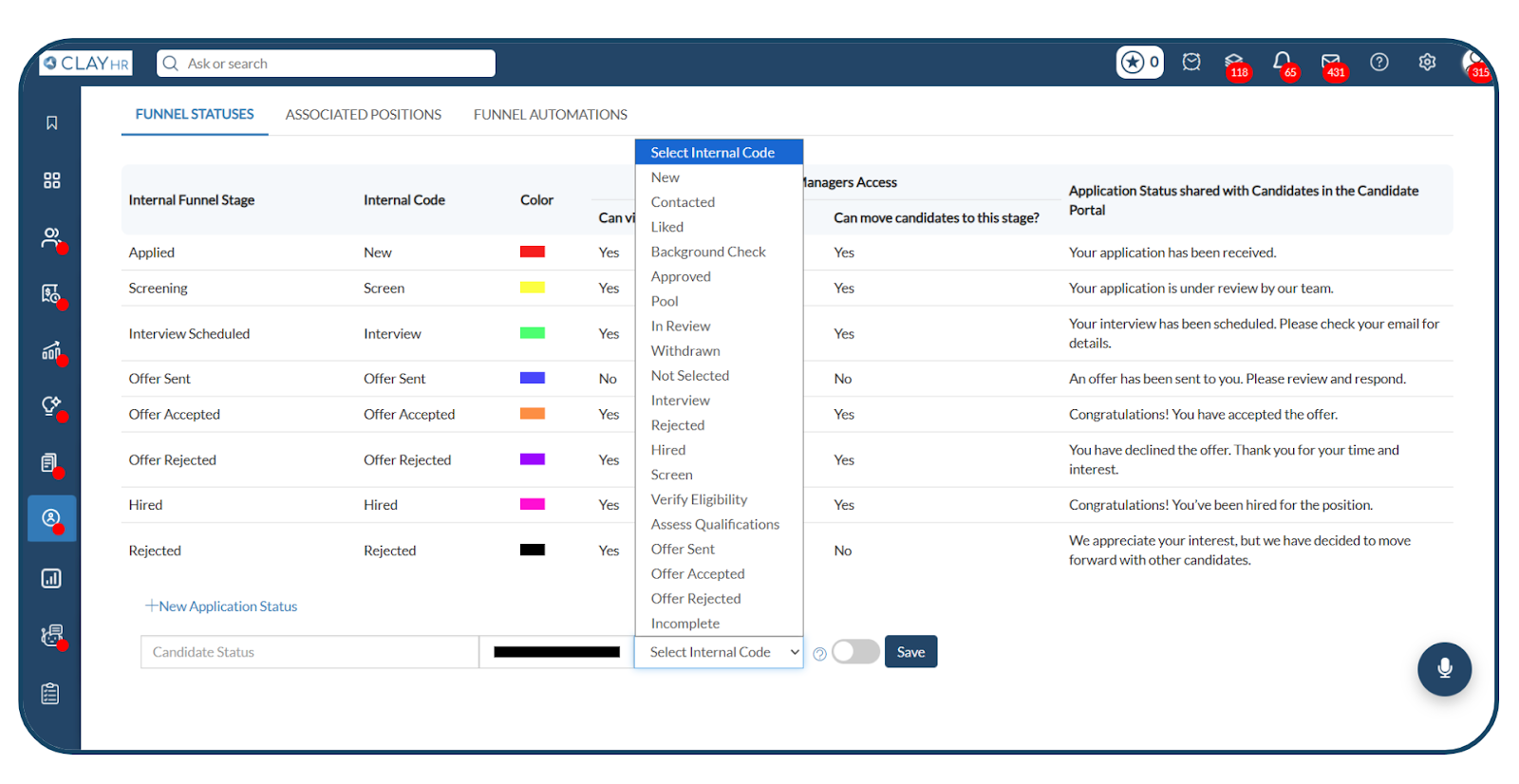
Internal Codes in ClayHR:
Below is a list of commonly used internal codes and what they represent:
Internal Codes in Action:
1. Indeed Disposition Sync
When a candidate applies via Indeed, ClayHR automatically maps the user-defined status (in any language) to the corresponding internal code. This code is then translated into an Indeed-supported status, ensuring accurate synchronization and consistent communication between ClayHR and Indeed.
2. Hiring Workflow Triggers
ClayHR triggers automated actions within the candidate funnel based on the internal codes assigned to statuses.
When a candidate’s status is linked to an internal code, the system automatically performs the corresponding workflow actions for that position.
Automated Movement Based on Internal Codes:
- Interview: When an interview is scheduled, the system updates the candidate status to “Interview Scheduled,” associated with the internal code “Interview.”
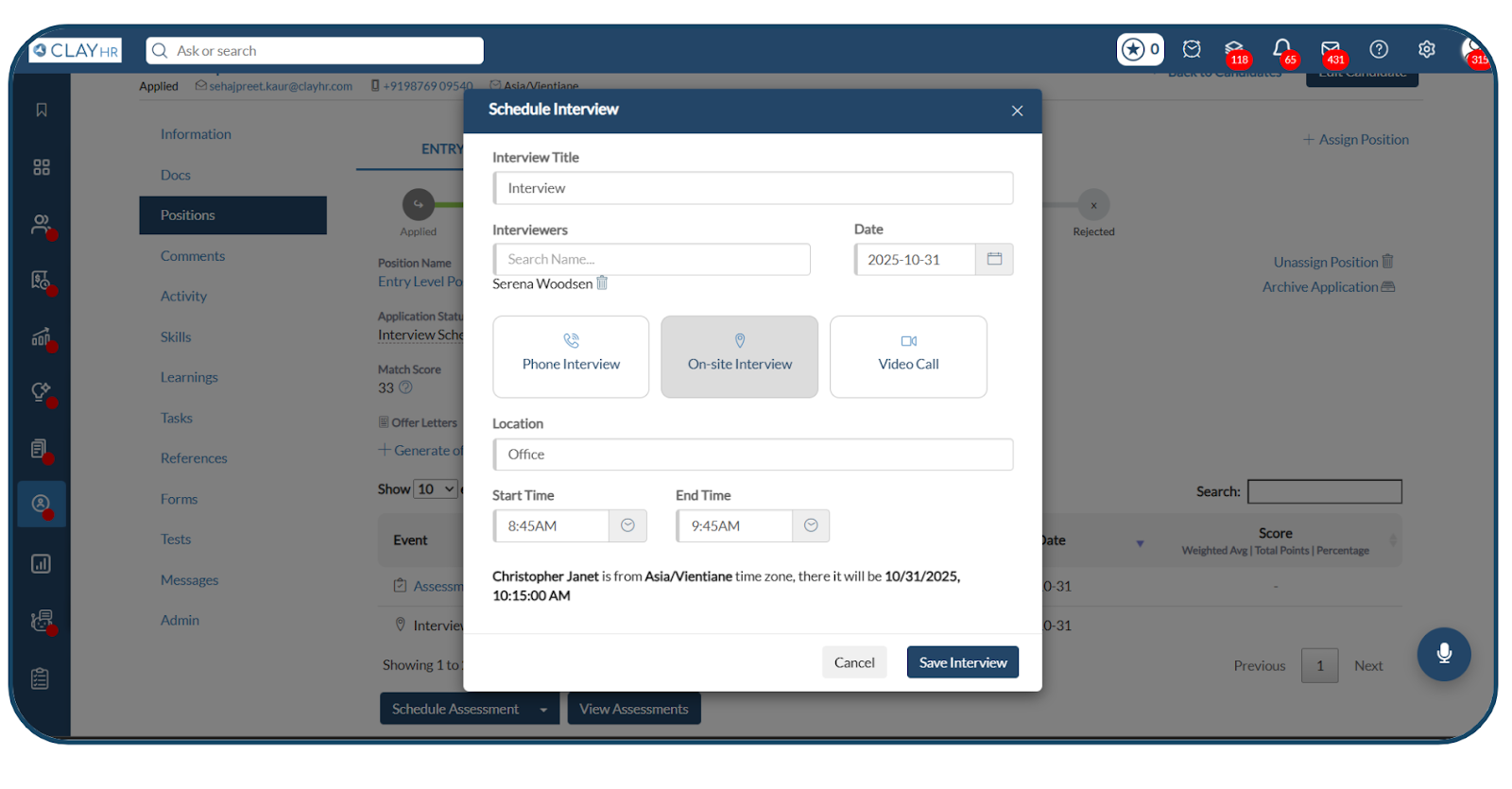
- Offer Sent: When an offer letter is generated and sent, the system updates the candidate status to “Offer Sent,” mapped to the internal code “Offer Sent.”
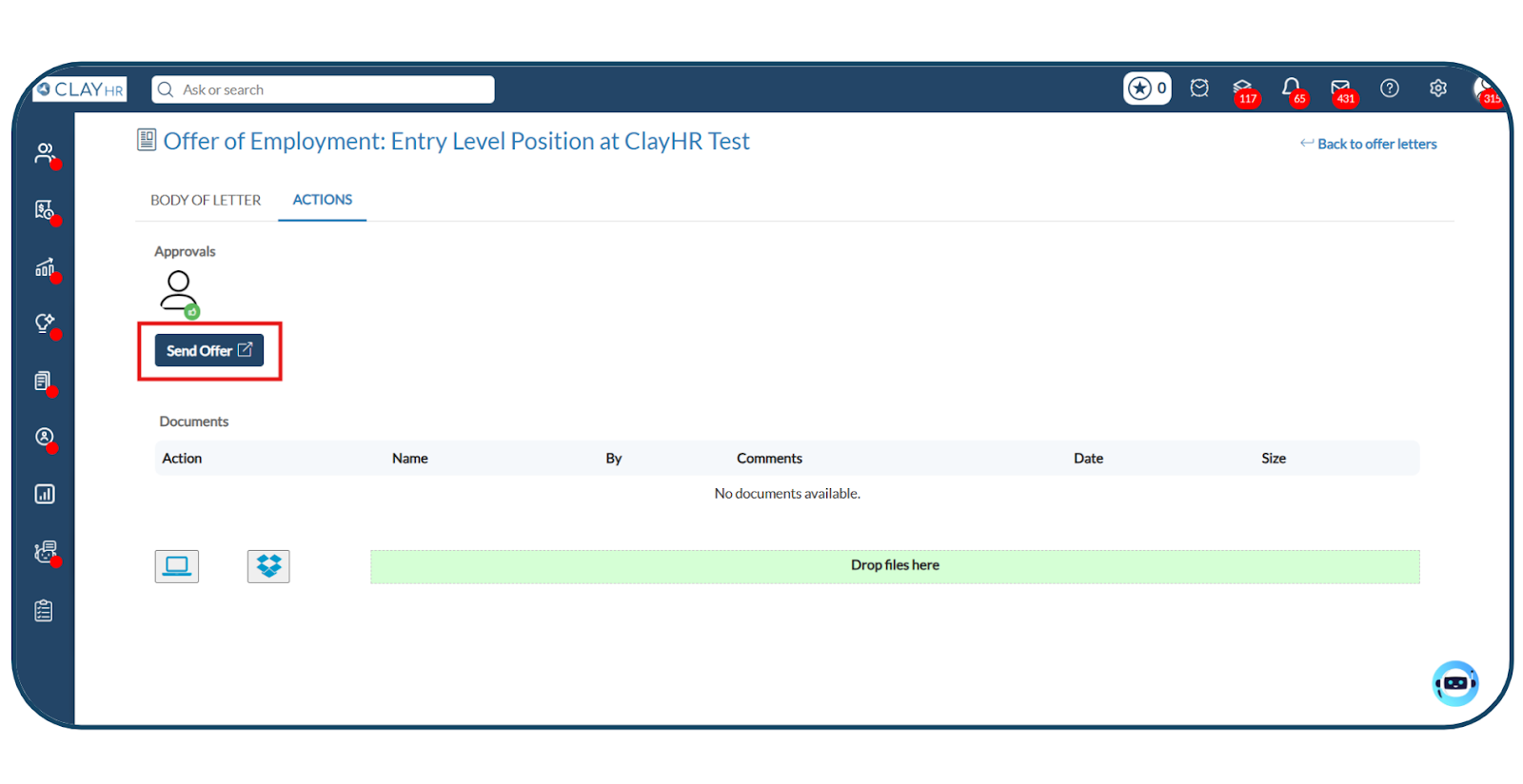
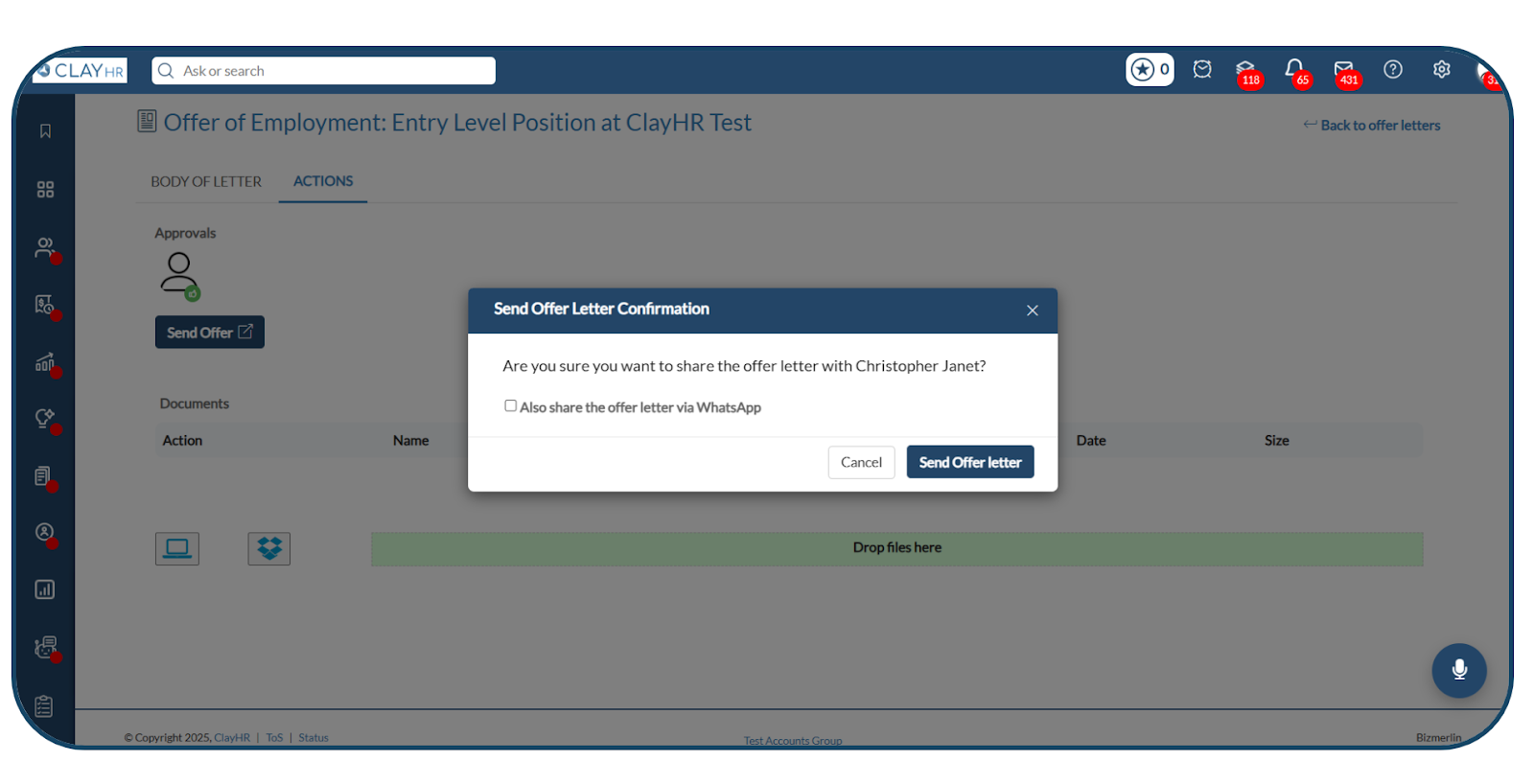
- Offer Accepted: When a candidate accepts the offer, the system updates the status to “Offer Accepted,” mapped to the internal code “Offer Accepted.”
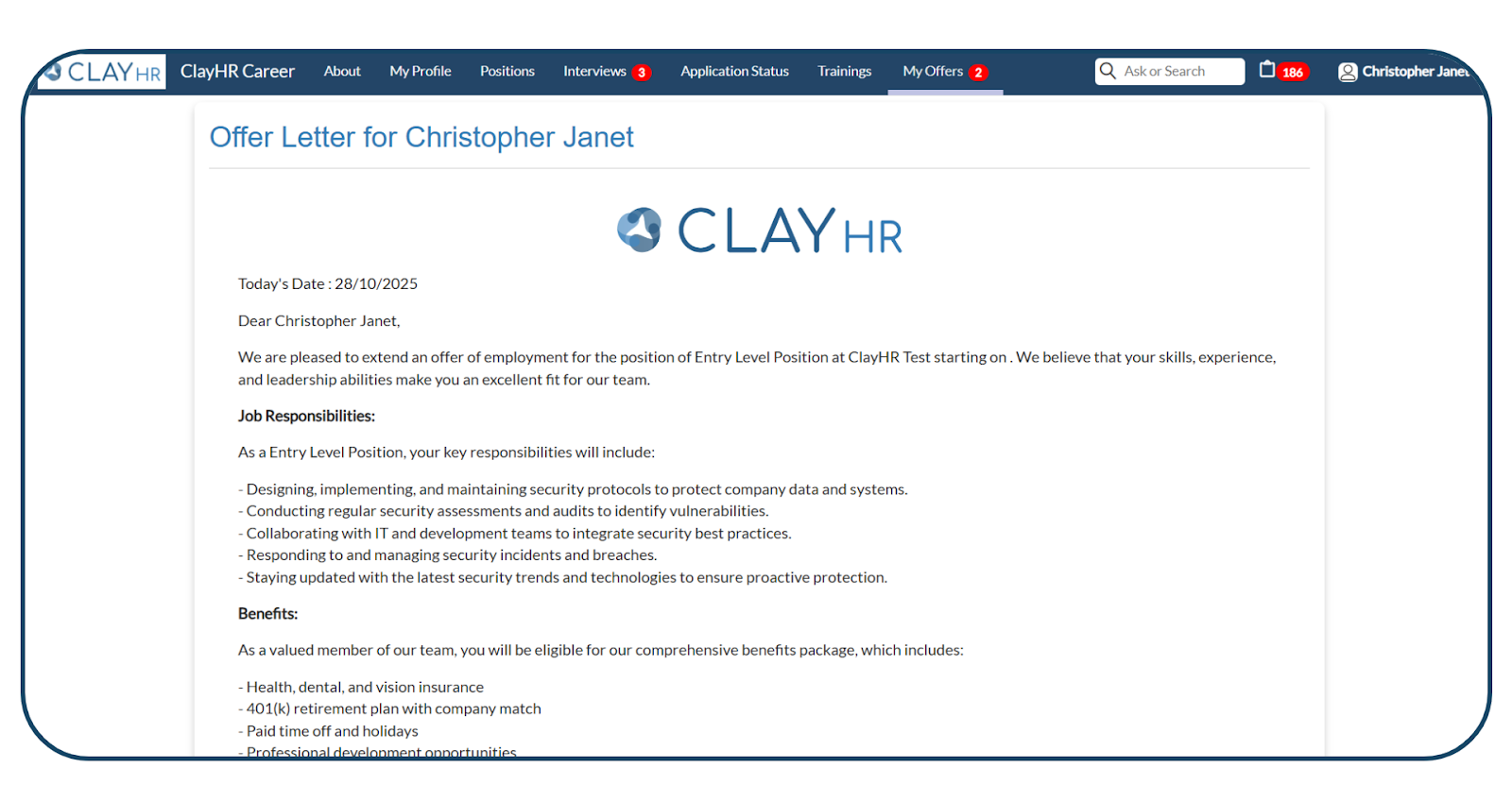
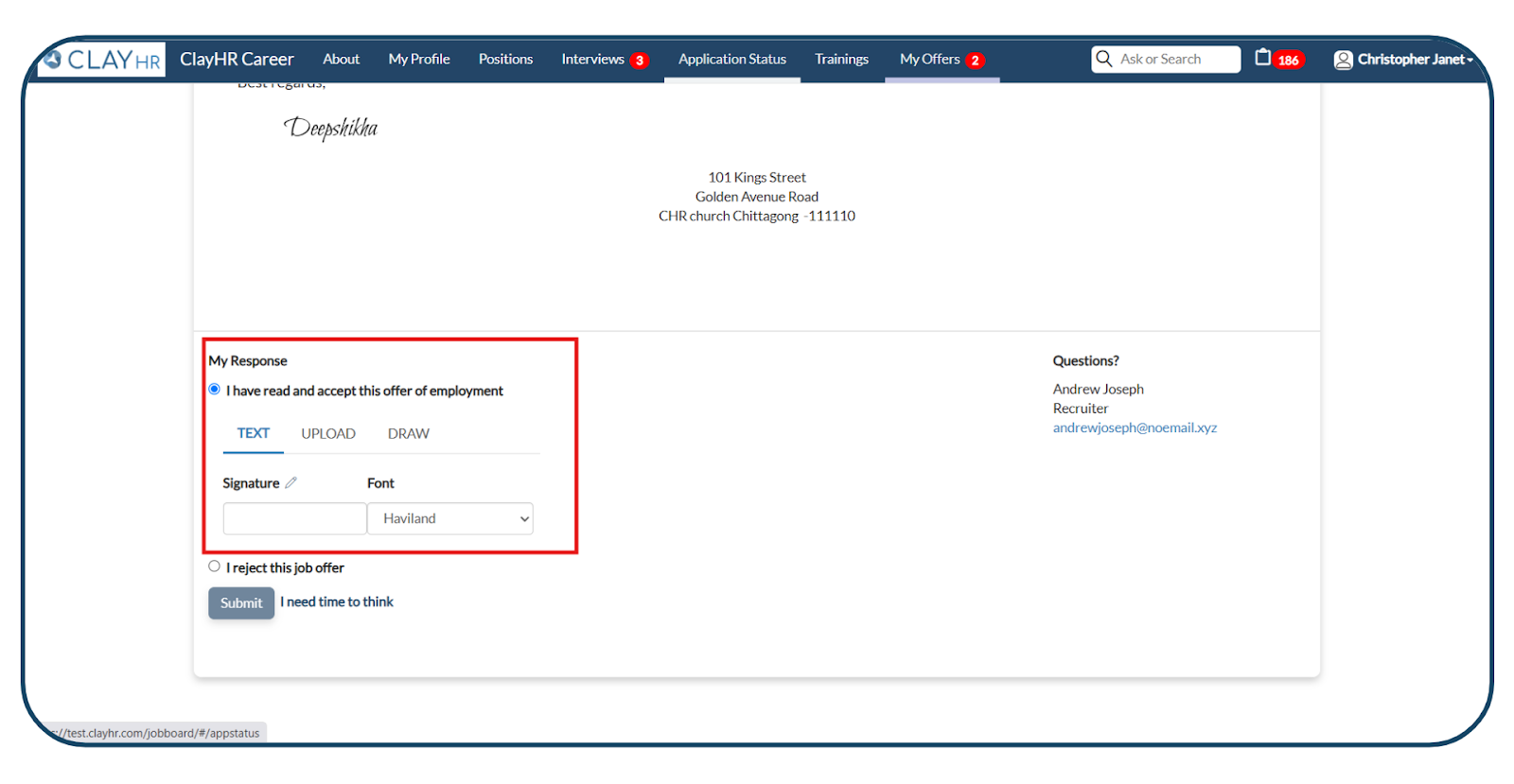
- Offer Rejected: When a candidate declines the offer, the system updates the status to “Offer Rejected,” associated with the internal code “Offer Rejected.”

- Hired: When a candidate is marked as hired, ClayHR updates the status to “Hired,” linked to the internal code “Hired.” This also triggers related workflows, such as reducing open positions and locking the candidate record.











